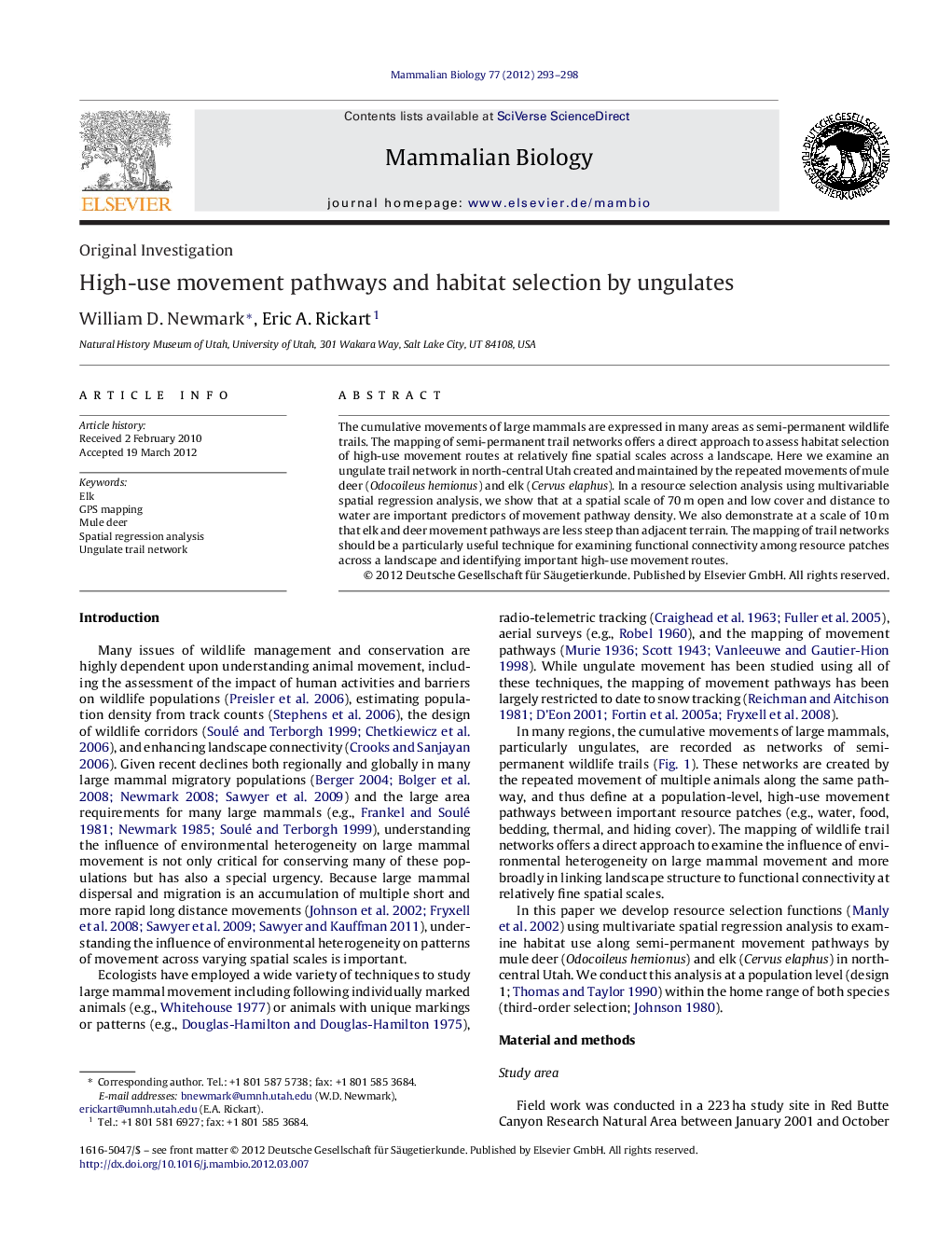| Article ID | Journal | Published Year | Pages | File Type |
|---|---|---|---|---|
| 2193780 | Mammalian Biology - Zeitschrift für Säugetierkunde | 2012 | 6 Pages |
The cumulative movements of large mammals are expressed in many areas as semi-permanent wildlife trails. The mapping of semi-permanent trail networks offers a direct approach to assess habitat selection of high-use movement routes at relatively fine spatial scales across a landscape. Here we examine an ungulate trail network in north-central Utah created and maintained by the repeated movements of mule deer (Odocoileus hemionus) and elk (Cervus elaphus). In a resource selection analysis using multivariable spatial regression analysis, we show that at a spatial scale of 70 m open and low cover and distance to water are important predictors of movement pathway density. We also demonstrate at a scale of 10 m that elk and deer movement pathways are less steep than adjacent terrain. The mapping of trail networks should be a particularly useful technique for examining functional connectivity among resource patches across a landscape and identifying important high-use movement routes.
